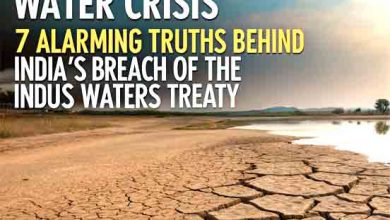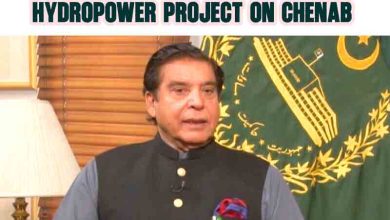Critical Water Crisis at Khanpur Dam Threatens Islamabad and Rawalpindi’s Supply
The water level in Khanpur Dam has plunged to just 8 feet above dead level, sparking a critical water crisis in Islamabad and Rawalpindi. Authorities warn of disruptions if monsoon rains delay.
The Khanpur Dam water crisis has escalated, with the reservoir now holding water dangerously close to the dead level. The latest figures released by WAPDA reveal that water inflow is down to just 29 cusecs, while outflow is being maintained at 106 cusecs to sustain minimal civic supply.
This crisis threatens the drinking water supply to millions of residents in Islamabad and Rawalpindi, who depend on the dam for their daily water needs.
What’s Causing the Water Level Drop?
Experts and officials attribute the sharp drop in water levels to a combination of factors:
- Erratic weather patterns and climate change
- Prolonged dry spells and delayed glacier melt
- Poor catchment area management
- Rising urban water demand
According to a senior irrigation department official, this isn’t just a seasonal issue. “This is not a seasonal anomaly—it’s a structural failure,” he warned. “Long-term planning and resource management are the only sustainable solutions.”
Impact on Rawalpindi and Islamabad
The immediate effect of the Khanpur Dam water crisis is being felt in urban water distribution. The Capital Development Authority (CDA) reported that Islamabad and Rawalpindi are receiving only 50 cusecs of water—barely enough to meet minimum needs.
Residents in low-lying areas have already reported:
- Reduced water pressure
- Shorter supply hours
- Increased dependence on private water tankers
If the situation persists, civic agencies may be forced to activate emergency water conservation plans, possibly including water rationing and penalties on high usage.
Suspension of Irrigation to Punjab and KP
The dam’s irrigation water supply to Punjab and Khyber Pakhtunkhwa has already been suspended for over a month. This has impacted thousands of acres of farmland in:
- Haripur district (KP)
- Chakwal and Attock (Punjab)
Farmers are now looking to monsoon rains as their last hope for salvaging the upcoming cropping season.
Climate Change and Mismanagement Worsen the Crisis
Hydrologists point to climate variability, inefficient water management, and unplanned urbanisation as root causes of the crisis.
In contrast to last year, where the dam held 1,935 feet of water in mid-June, this year’s reservoir levels have dropped significantly, more than 17 feet lower than 2024.
Additional concerns include:
- Glacier melt mismanagement in the northern regions
- Unchecked illegal tube wells
- Absence of catchment reforestation programs
Hope Lies in Upcoming Monsoon Rains
Officials are cautiously optimistic that the monsoon season, expected to begin by late June, will replenish Khanpur Dam. Historically, the dam reaches peak levels between July and September during the monsoon.
“Timely rains could save us from a total supply breakdown,” said a CDA spokesperson. “However, that’s a big if, considering how unpredictable climate has become.”
Public Appeals and Emergency Plans
In light of the Khanpur Dam water crisis, the CDA and WAPDA have issued urgent public advisories, urging citizens to conserve water. They are recommending the following:
- Avoid car washing and watering lawns
- Minimize pipe flushing
- Refrain from unnecessary water use
Meanwhile, water supply agencies are preparing emergency response protocols, including:
- Rationing schedules
- Emergency deployment of water tankers
- Review of water release protocols from upstream reservoirs
What Needs to Be Done?
To prevent a repeat of the Khanpur Dam water crisis, long-term reforms are essential. Experts recommend:
- Reforestation in upstream catchment areas
- Rainwater harvesting systems in urban centers
- Upgrading outdated water infrastructure
- Public awareness campaigns about sustainable water use
- Regular monitoring of glacial melt and runoff patterns
Government bodies must work with climate experts, civil society, and local communities to create an adaptive, resilient water policy.
Conclusion: Time for Urgent Water Reform
The Khanpur Dam water crisis is a wake-up call for Pakistan. With climate change accelerating, erratic weather patterns becoming the norm, and urban demand skyrocketing, the time for action is now. Islamabad and Rawalpindi cannot afford another summer of water stress and civic panic.
By adopting sustainable water practices, strengthening governance, and preparing for the next crisis before it arrives, Pakistan can secure a water-safe future for generations to come.
Internal and External Resources:
Internal Links:
External Links:







